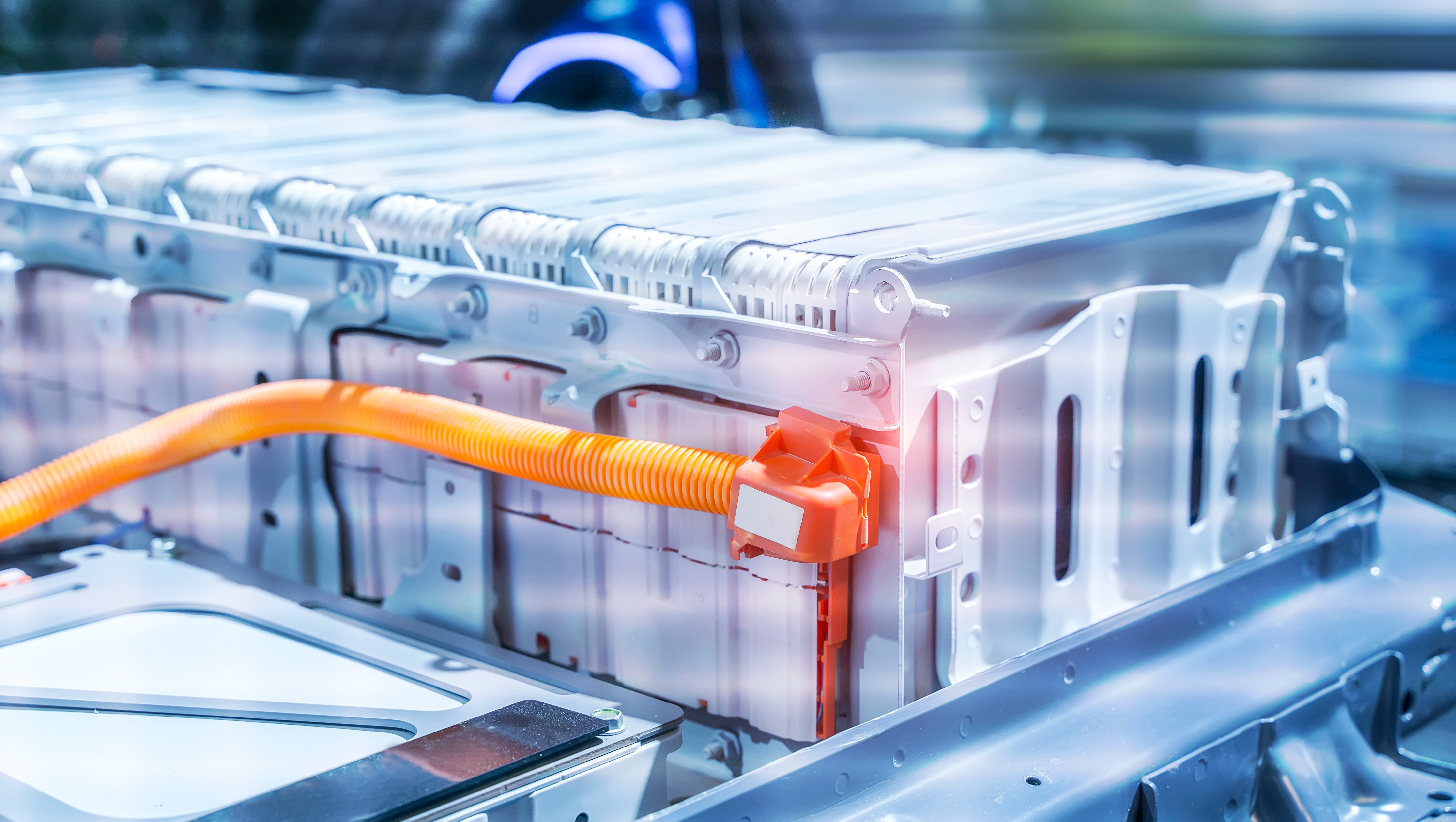Reneos: the European tailor-made solution for end-of-life batteries
Reneos is a European network specialising in the collection and recycling of batteries, and offering tailor-made solutions. Read more about it here
When they reach the end of their first lifecycle, lithium batteries from Electric Vehicles (EVs) find themselves at a crossroads. Can they comply with regulations and be sent safely on their way for recycling? Or are there logistical and other problems standing in the way?
Whatever happens, you need to have the right solution ready, because soon there will be large volumes of end-of-life EV batteries that need to be dealt with. Plus there is also the statutory take-back obligation for batteries. (Which is literally a heavy-duty problem, with batteries weighing up to 900 kg!)
This is why we now need to concentrate on a number of key issues for dealing with end-of-life EV batteries – and then focus on a crucial element in the solution: finding the right packaging.
Used, defective or damaged batteries need to be collected with the utmost care and taken to the location where they will either be repaired, given a new life (repurposed) or recycled.
This ‘utmost care’ is no luxury either, because for all end-of-life batteries, transport is a critical phase in the recycling process. And it is certainly important enough not to be left to chance.

Starting point: end-of-life EV batteries are regulated as hazardous goods for transport. Within Europe, they are known as ADR and have their own hazard warning label (9A). There are different ADR rules, depending on the type and size of the batteries.
This means that in addition to the usual safety measures, you must also provide special packaging, special labelling for hazardous substances and special documents that certify compliance with the regulations in force. Let’s focus on the first ‘must’.
Even though lithium-ion batteries’ chemistry is considered one of the safest, they still pose significant risks, as they are powerful sources of energy. As we have learned to understand in recent years, in general there are three kinds of risks to be considered when lithium-ion batteries are handled:
The risks associated with lithium-ion batteries are mainly related to deviations from normal operating conditions, which result in a state of “criticality” or “damage” of the battery itself. When a battery is removed and therefore the vehicle's safety systems are no longer active, the risk of instability increases especially if the battery is defective or damaged (for example following an accident) or if it is placed in an unsuitable storage (e.g. without safety measures for the battery and for staff).
Lithium batteries for EVs are powerful and valuable. But, usually, they are also heavy (up to 900 kg!) and when they are transported without packaging they are very sensitive to external factors, such as temperature, humidity and shocks. This provides challenges that need to be tackled.
Internationally speaking, the regulations for transporting hazardous substances are not straightforward.
They can vary depending on the continent, country and sometimes even the region. They also vary according to the different means of transportation.
For example, within Europe, there are ADR regulations for road transport, RID for rail transport, ADN for transport by inland waterways, IMDG for international transport by sea, ICAO/IATA for international air transport – and so on.
Problem: this can sometimes make transportation compliance very complex, because what is safe and compliant for one set of regulations may not be for the next. Furthermore, the regulations themselves keep changing, too. For example, the ADR regulations are adjusted every 2 years. Keeping up to date is key.
Often, the actual condition of a battery cannot be determined at first glance. Just a few broken or worn-out cells can affect the whole battery. And yet the condition of the battery needs to be known before transportation. Is it (un)damaged or critical? As the party dispatching the battery, you are responsible for declaring its condition, which means you need to start with an in-depth diagnosis and risk analysis.

Having the right packaging is an absolute must. The requirements for packaging depend on the condition of the battery. You can design your own packaging, however, it must comply with strict requirements and must go through specific tests in order to be certified.
We see plenty of packaging solutions on the market that, when put into practice, don’t meet all the requirements and therefore receive a ‘no go’.
All of the points above prompt us to find an answer to the key question: what exactly is the ‘right packaging’? What are the things you need to pay extra attention to? Below are a few points to focus on:
1. Base your choice of packaging for end-of-life EV batteries on the dimensions, the chemical composition, the actual condition, the geometry and power (kWh) of the battery, plus the required procedures in your situation. If you have a complex issue, ask advice from professionals with the necessary expertise.
2. If you have designed the packaging yourself, then you will need to have it tested and certified by an accredited body. This is mandatory: certified packaging is essential for complying with the ADR safety requirements.
3. Depending on the situation, the right packaging must be heat-insulating, leak-resistant, stabilising and/or shockproof. It should certainly not lead to a short-circuit. To avoid any hazardous situations, you need to make sure the battery has a fully enclosed inner pack made of non-conductive material, such as strong plastic or metal, with a non-conductive liner.
4. Any damaged battery heavier than 30 kg needs to be packed separately. This is to prevent any contact with other batteries or conductive material in the packaging and hence avoid any possible ‘runaway’ situation.
ADR prescribes “a box containing sufficient non-conductive insulation material to be used as a packaging.” Vermiculite (a natural mineral) or sand can be used for this. Additional ‘buffering’ should also prevent the battery from shifting.
5. Many available packaging solutions only provide protection against external factors during transport, such as heat, moisture or shocks.
But the right packaging solution for damaged batteries also provides sufficient protection against internal hazards. This particular packaging must therefore be able to withstand significantly increased pressure from within. Some types of critical batteries also require additional protection.
6. Batteries come in all shapes and sizes, with many variations. They are also evolving all the time: experiments with new chemical compositions are conducted frequently.
Customised packaging for each battery type would seem ideal, but customisation taken to such extremes is usually not feasible in operational and cost terms.
If you are looking for the perfect safety box for EV battery transport, we highly recommend one of our pre-approved systems, such as the Cobat Lithium Box or the Bebat PRO drums and ASPs. With these boxes, safety is maximised thanks to their perfect thermal insulation and many other state-of-the-art features such as easy fire water access or a sophisticated gas control system.
-> Discover more about our pre-approved packaging systems in this article.
Usually, end-of-life batteries not only need to be collected, but also stored temporarily before they are sent for processing. The right packaging is geared for safe transportation, as well as safe handling and storage. In other words: it complies with standards for the transport of hazardous goods but also allows for the correct handling, loading and unloading, safe storage, protection against dust, etc.
To prepare your battery for transportation, it is preferable to involve all parties concerned in the aftercare chain, from collection to recycling, in the development of packaging solutions.
All in all, is it a complex task?
Certainly, there is a lot for you to look at. That’s exactly why Reneos was founded. Reneos brings together the best experts in battery logistics and recycling to join forces and assist you with all the challenges involved with the EV battery aftercare process.
Including the right packaging? That’s right.
Because not only does Reneos offer the necessary expertise and a package of services that you can choose from, à la carte, but it also provides a tailor-made solution for packing, transporting and processing end-of-life batteries.
Reneos packaging is:
Find out more about our packaging solutions in this article.
Make an appointment for an obligation-free consultation with Reneos to find the solution you need!